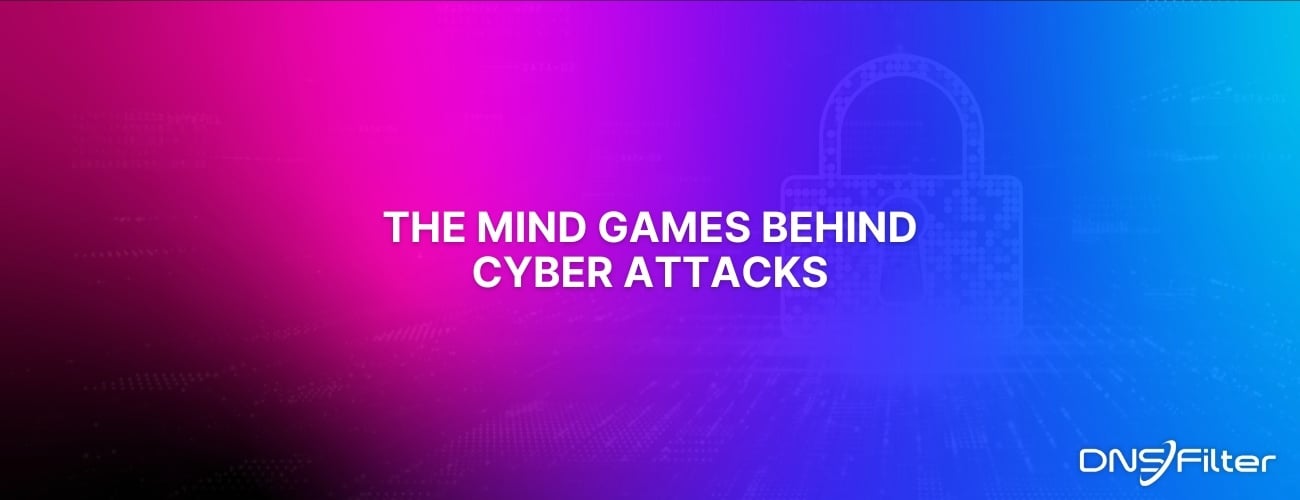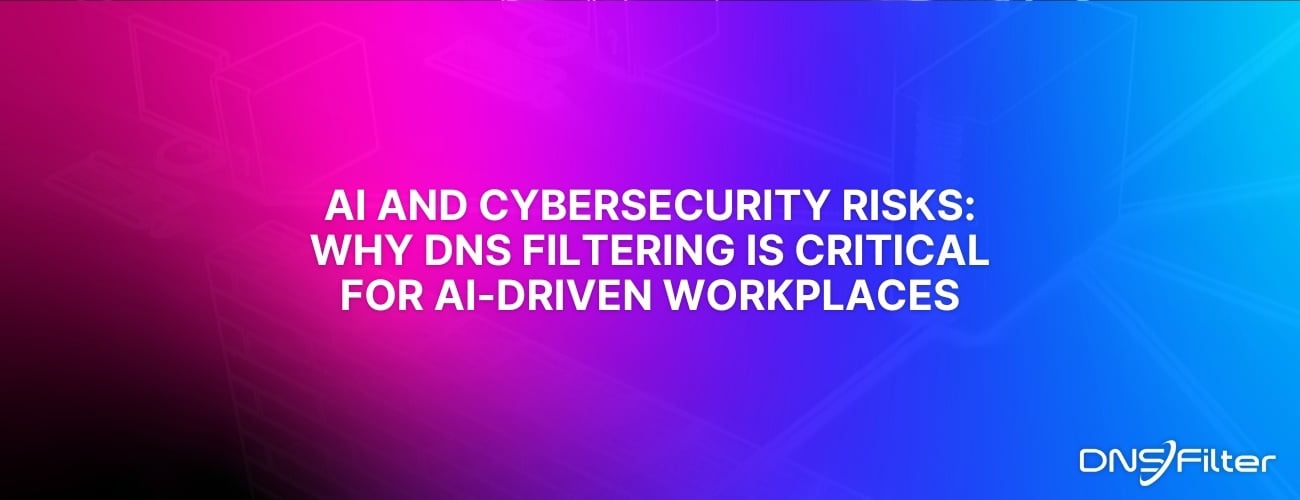Share this
The Hidden Risks of Refreshing Old Threats
by Mikey Pruitt on Mar 6, 2025 12:46:04 PM
When Vintage Goes Viral (In All the Wrong Ways)
Remember that time you found your old Tamagotchi and thought, "Hey, this could be fun again"? Well, cybercriminals are having a similar nostalgic moment, but instead of resurrecting digital pets, they're breathing new life into outdated malware and long-forgotten data breaches. Welcome to the world of recycled cyber threats, where everything old is terrifyingly new again.
The Zombie Apocalypse of Cyber Threats
Just when you thought it was safe to use the Internet without looking over your shoulder, those dusty old threats are shambling back to life, hungrier than ever for your data. But why are hackers suddenly playing vintage vinyl in cybercrime?
It's cheap. Why build a new Death Star when you can just repaint the old one?
It works. If it ain't broke, don't fix it—just add some AI and call it "artisanal hacking”
We're predictable. Turns out, humans are creatures of habit—even when it comes to making terrible password choices.
According to a report by Cybersecurity Ventures, cybercrime is expected to cost the world $10.5 trillion annually by 2025. That's a lot of money for recycling old tricks. But hey, at least they're being environmentally conscious, right?
The Persistent Plague of Ancient Breaches
Remember that MySpace account you abandoned faster than your New Year's resolution? Pepperidge Farm remembers—and so do hackers. Here's why old data from previous breaches is the gift that keeps on giving (to cybercriminals):
- Embarrassing photos aren't the only thing that sticks around forever
- That "25 Things About Me" quiz all your friends are taking? It's now a hacker's cheat sheet
- Your first pet's name + your mother's maiden name = the keys to your digital kingdom
A study by the Identity Theft Resource Center found that the number of data breaches in 2021 surpassed the total number in 2020 by 23%. That's a lot of skeletons falling out of digital closets.
But why should we care about ancient history? Well, imagine spending your whole life wondering if the next email, phone call, or credit card application is someone exploiting a breach from when you were in diapers. That's not just a bad day—that's a Lifetime movie waiting to happen.
The School of Hard Knocks (and Easy Hacks)
Schools are an all-you-can-eat buffet for data-hungry hackers. They've got the whole enchilada:
- Full names (including that middle name you've been trying to hide)
- Birthdates
- Social Security numbers (the crown jewels of identity theft)
- Home addresses
- Medical records
According to a report by Comparitech, US schools and colleges have suffered 3,713 data breaches since 2005, affecting over 37.6 million records. That's a lot of A+ grades in hacking 101. Like a fine wine—it only gets more valuable with age. A child's identity stolen at 10 can still be exploited when they're 30, long after they've outgrown their embarrassing air guitar phase.
AI: The Not-So-Secret Ingredient in This Recycled Threat Soufflé
Artificial Intelligence has become the secret sauce spicing up old hacking recipes, making them more palatable and harder to detect. Consider phishing emails: Once riddled with typos and generic greetings, they now read like personal notes from trusted friends, thanks to AI's knack for mimicking writing styles.
Malware, too, has gotten a brain boost. Modern strains can analyze their environment and tweak their behavior on the fly, sidestepping security measures with the agility of a seasoned gymnast.
Even the classic honeypot—a decoy system set up to lure attackers—has undergone an AI makeover. Today's AI-driven honeypots are so convincing that they can engage intruders in realistic interactions, gathering intelligence without tipping off the attacker.
In essence, AI isn't just a new ingredient; it's transforming the entire flavor profile of cyber threats, making them more sophisticated and harder to detect.
The "It Won't Happen to Me" Delusion
Why do we keep falling for these recycled tricks? Because we tell ourselves little white lies like:
- "I'm not important enough to hack"
- "My antivirus is free, but it’s still good!"
- "I have nothing to hide"
A survey by Google and Harris Poll found that 51% of people reuse their “favorite” password across the majority of accounts.
The Resurgence of Old Threats: Greatest Hits Edition
Let's take a stroll down memory lane and revisit some of the golden oldies of the hacking world that have been making a comeback in the ‘20s:
Phishing scams have evolved from the clichéd Nigerian prince emails to sophisticated, personalized attacks that can deceive even the most vigilant individuals. In 2023, the FBI's Internet Crime Complaint Center received 298,878 phishing complaints, nearly double the number from 2019, highlighting the escalating threat.
Malware continues to resurface in new forms. Kaspersky's detection systems discovered 411,000 new malicious files daily in 2023. This surge underscores the relentless creativity of cybercriminals.
Ransomware attacks have surged dramatically, with incidents increasing by 518% in the first half of 2021. The average ransom payment rose by 82% to $570,000 during this period, reflecting the growing audacity of attackers.
The Legacy System Limbo: How Low Can You Go?
Many organizations continue to rely on outdated systems, reminiscent of technology from the floppy disk era. This isn't merely a case of "if it ain't broke, don't fix it"; it's more akin to "it's definitely broken, but we're choosing to ignore it."
In the healthcare sector, a significant number of medical devices operate on unsupported Windows operating systems. This reliance on obsolete software exposes critical healthcare infrastructure to potential cyber threats.
A notable example of the consequences of using outdated systems is the 2017 WannaCry ransomware attack. This incident primarily targeted organizations running unsupported Windows versions, leading to widespread disruptions across various sectors.
Ignoring the vulnerabilities inherent in legacy systems is one of the biggest cyber no nos. It's imperative for organizations to recognize and address these risks to safeguard their operations and data.
DNS Filtering: The Digital Bouncer
On the subject of vintage, there’s one thing that consistently fights against the resurgence of old threats: DNS filtering. DNS filters prevent access to undesirable content and safeguard your network from potential threats. This protective measure operates seamlessly, even on older systems, ensuring that security isn't compromised by outdated technology. (Hint: I’m talking about DNSFilter now)
Implementing DNSFilter is a practical and mess-free solution to enhance your cybersecurity posture because it:
- Blocks the bad stuff faster than you can click it
- Works via DNS even when you're using that ancient Windows XP machine
- More practical than throwing your digital devices in a river (and less messy)
Organizations utilizing DNS filtering experience a significant reduction in data breaches compared to those without such measures. This proactive approach serves as a protective barrier for your data, reinforcing your network's defenses. Try it yourself here for free.
The Not-So-Grand Finale
What's old is new, what's new is terrifying, and what's terrifying is probably just another day ending in 'y'. The recycling of old threats is more than a trend—it's a stark reminder that in the digital world, nothing truly dies. It just waits for the right moment to jump out and yell "Boo!" at your bank account, your company secrets, and your identity.
So the next time you're tempted to click on that link promising photos of cats wearing hats, remember: in cyberspace, no one can hear you scream... but they can definitely hack your webcam and watch you do it.
Stay safe out there, and maybe think twice before you resurrect that old Myspace account. Some things are better left in the digital past.
Share this
 Artificial Intelligence in Cybersecurity
Artificial Intelligence in Cybersecurity
The term “artificial intelligence (AI)” was first coined in 1956. While progress stalled for many years, we can thank IBM for sparking real interest in AI as viable technology: First in 1997 when the computer Deep Blue defeated a chess champion and again in 2011 when Watson won Jeopardy!
 The Mind Games Behind Cyber Attacks
The Mind Games Behind Cyber Attacks
Hackers have long understood that the most sophisticated firewall is no match for a well-placed psychological trick. While many focus on the technical prowess of cybercriminals, the real magic often lies in their ability to manipulate human behavior. By exploiting our natural tendencies and cognitive biases, hackers can slip past even the most robust security systems. It's not just about cracking codes; it's about cracking the human psyche.
 AI and Cybersecurity Risks: Why DNS Filtering is Critical for AI-Driven Workplaces
AI and Cybersecurity Risks: Why DNS Filtering is Critical for AI-Driven Workplaces
Artificial intelligence is transforming business operations, automating everything from customer service to data analysis. But with these advancements come new security challenges. AI-driven cyber threats are becoming more sophisticated, enabling attackers to automate phishing campaigns, generate malware, and exfiltrate sensitive data at scale. Without proper safeguards, AI tools can unintentionally leak corporate secrets or connect to malicious ...


